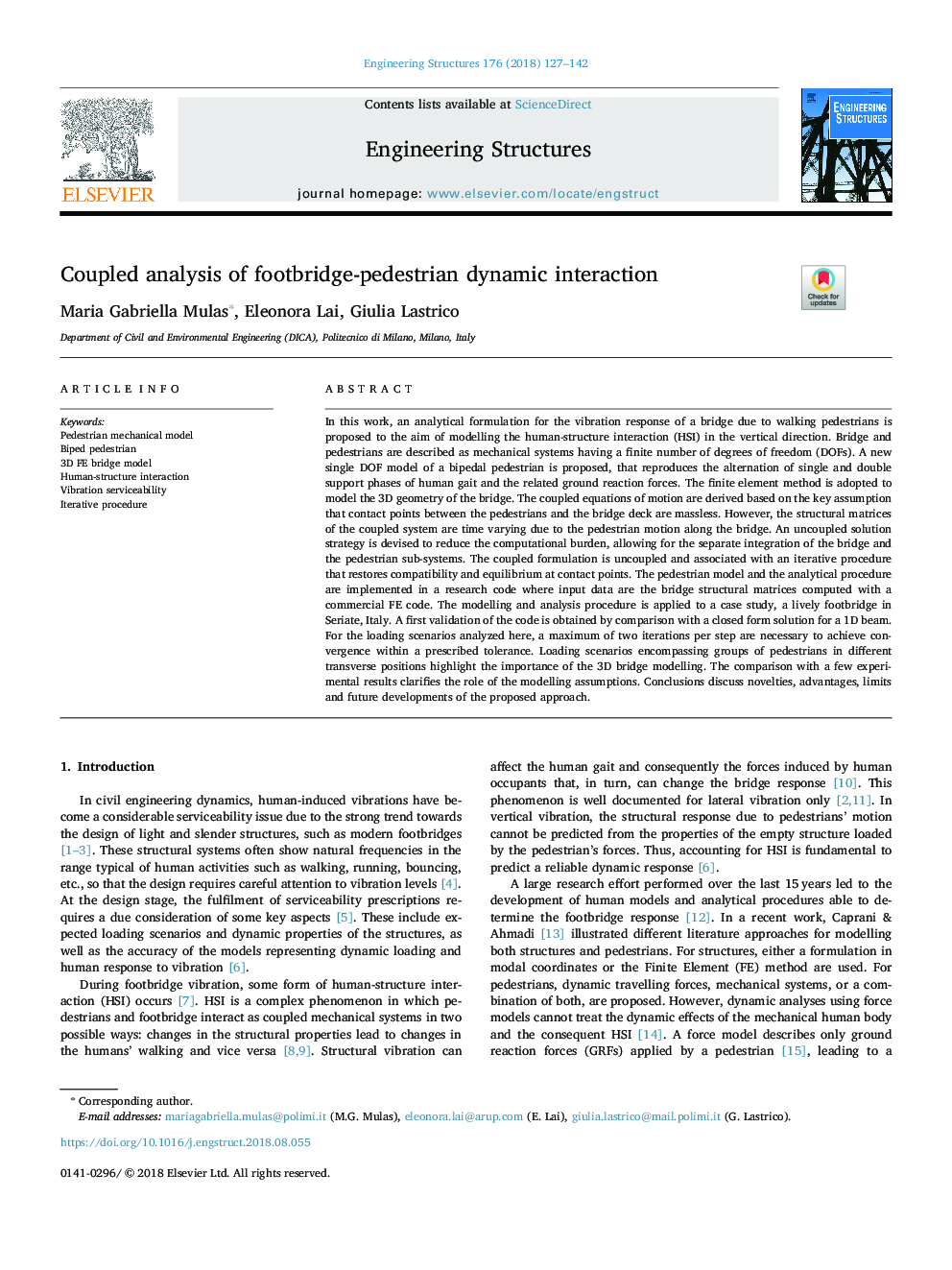| کد مقاله | کد نشریه | سال انتشار | مقاله انگلیسی | نسخه تمام متن |
|---|---|---|---|---|
| 10148811 | 1646695 | 2018 | 16 صفحه PDF | دانلود رایگان |
عنوان انگلیسی مقاله ISI
Coupled analysis of footbridge-pedestrian dynamic interaction
ترجمه فارسی عنوان
تجزیه و تحلیل دو جانبه از تعامل پویا پیاده روی پیاده روی
دانلود مقاله + سفارش ترجمه
دانلود مقاله ISI انگلیسی
رایگان برای ایرانیان
کلمات کلیدی
موضوعات مرتبط
مهندسی و علوم پایه
علوم زمین و سیارات
مهندسی ژئوتکنیک و زمین شناسی مهندسی
چکیده انگلیسی
In this work, an analytical formulation for the vibration response of a bridge due to walking pedestrians is proposed to the aim of modelling the human-structure interaction (HSI) in the vertical direction. Bridge and pedestrians are described as mechanical systems having a finite number of degrees of freedom (DOFs). A new single DOF model of a bipedal pedestrian is proposed, that reproduces the alternation of single and double support phases of human gait and the related ground reaction forces. The finite element method is adopted to model the 3D geometry of the bridge. The coupled equations of motion are derived based on the key assumption that contact points between the pedestrians and the bridge deck are massless. However, the structural matrices of the coupled system are time varying due to the pedestrian motion along the bridge. An uncoupled solution strategy is devised to reduce the computational burden, allowing for the separate integration of the bridge and the pedestrian sub-systems. The coupled formulation is uncoupled and associated with an iterative procedure that restores compatibility and equilibrium at contact points. The pedestrian model and the analytical procedure are implemented in a research code where input data are the bridge structural matrices computed with a commercial FE code. The modelling and analysis procedure is applied to a case study, a lively footbridge in Seriate, Italy. A first validation of the code is obtained by comparison with a closed form solution for a 1D beam. For the loading scenarios analyzed here, a maximum of two iterations per step are necessary to achieve convergence within a prescribed tolerance. Loading scenarios encompassing groups of pedestrians in different transverse positions highlight the importance of the 3D bridge modelling. The comparison with a few experimental results clarifies the role of the modelling assumptions. Conclusions discuss novelties, advantages, limits and future developments of the proposed approach.
ناشر
Database: Elsevier - ScienceDirect (ساینس دایرکت)
Journal: Engineering Structures - Volume 176, 1 December 2018, Pages 127-142
Journal: Engineering Structures - Volume 176, 1 December 2018, Pages 127-142
نویسندگان
Maria Gabriella Mulas, Eleonora Lai, Giulia Lastrico,
